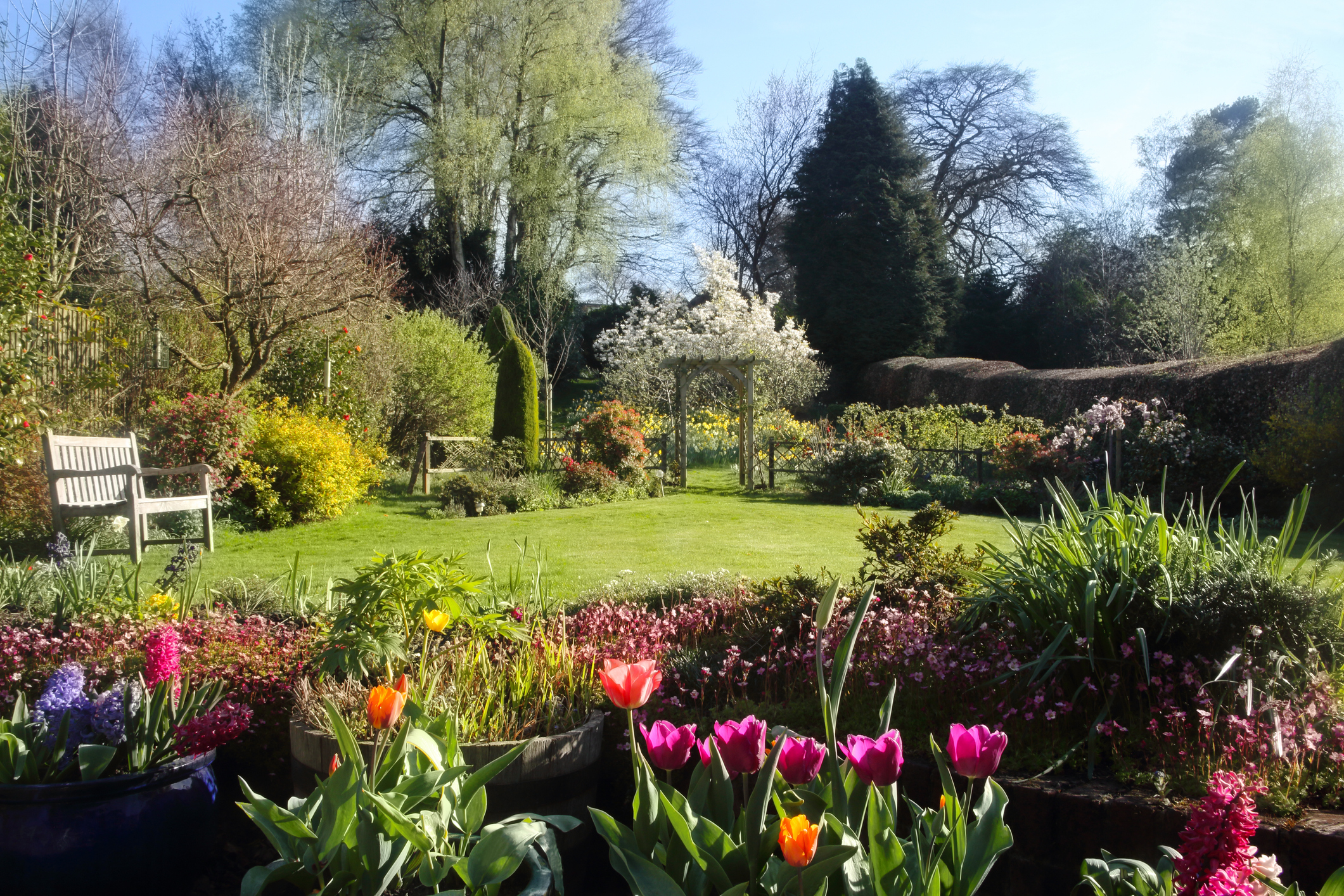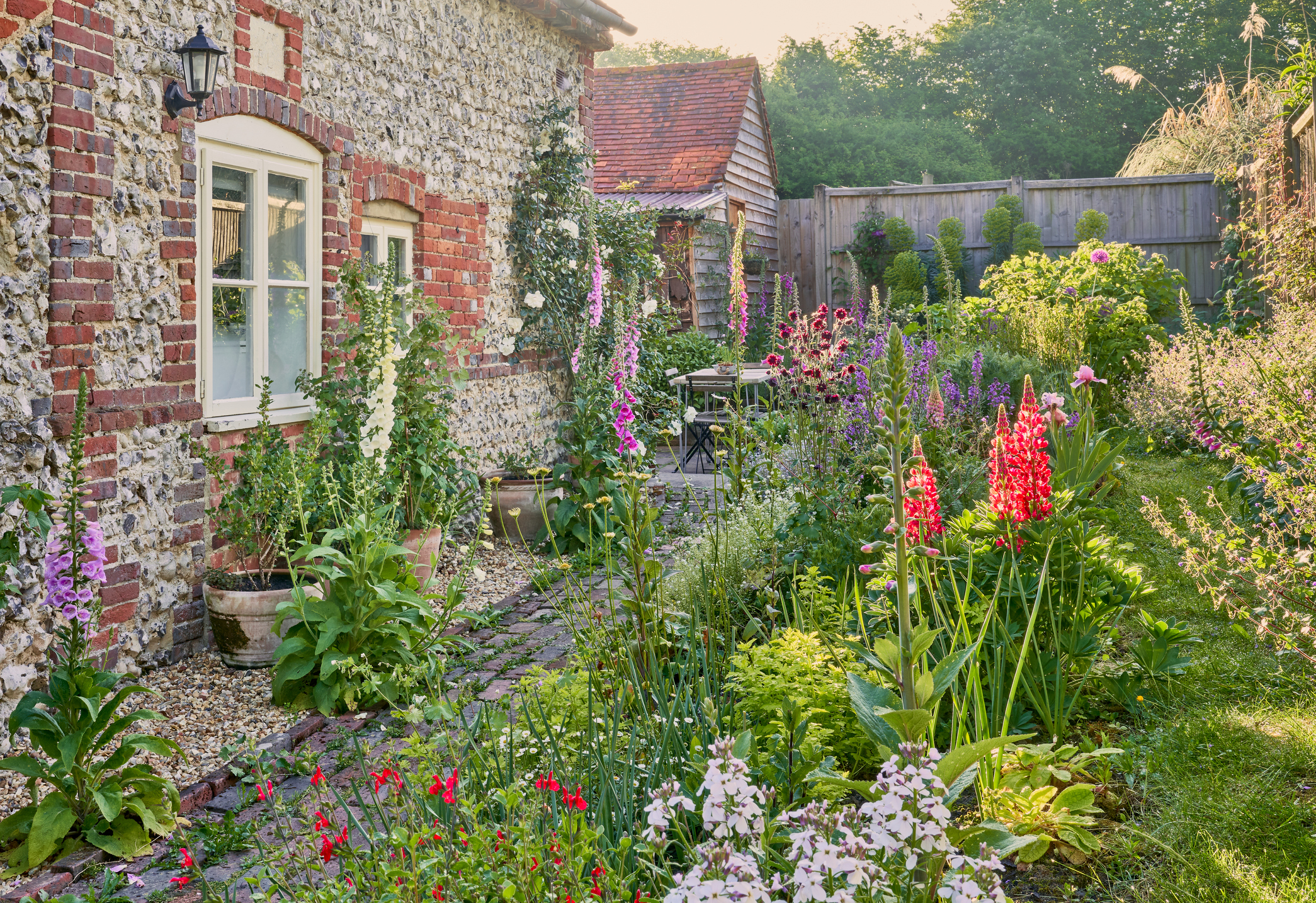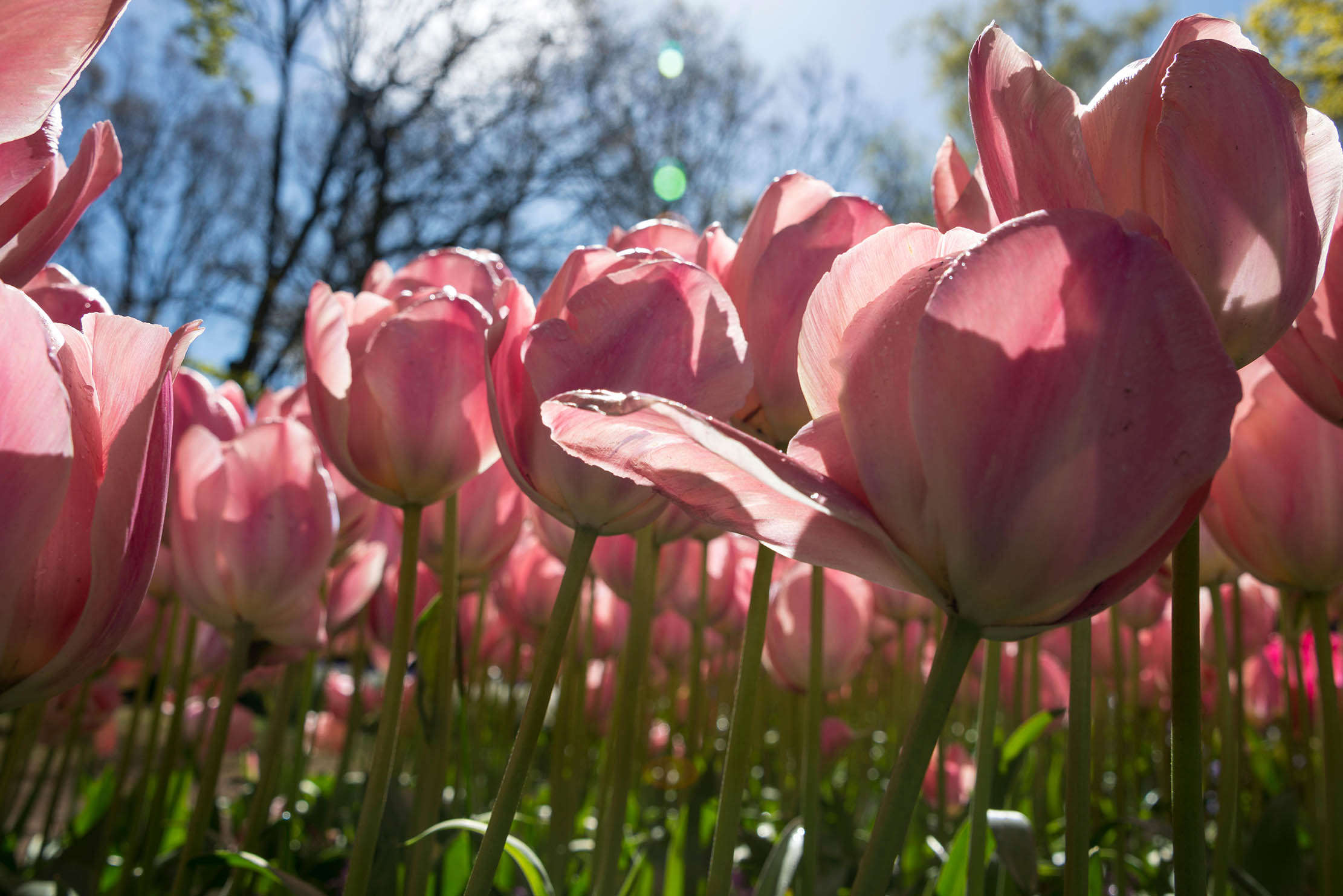Anna Pavord: 'I never quite remember how glorious it is going to be, that first day in spring'
The gardener and writer Anna Pavrod on the joy of rediscovery that is spring.


I never quite remember how glorious it is going to be, that first day in spring when I can stay out all day in the garden, not doing anything unpleasant such as pruning roses, but simply fiddling about — a bit of weeding, a bit of tying in, but mostly just wandering, fitting myself back into the plot. It’s like being at a party, where people you haven’t seen for ages suddenly loom into view. Meeting them again, you remember why you liked their company. The equivalent of the party pooper is bittercress, pushing in round a juicy peony where it’s not wanted.
By early spring, the bank, rising from the yard by the house, is on the move. There’s a lot of small stuff, snuffling about, low down, and I’ll get round to admiring that, later on. But, at this particular moment, my eye goes straight to the glorious bubbling mound of giant fennel, Ferula communis.
It’s a cousin of the culinary fennel, but much more dramatic. I saw it first in eastern Turkey, where it erupts from the brown hillsides with an exuberance very much at odds with its surroundings. In our garden, it starts into growth ludicrously early, producing filigree fronds of a brilliant, hopeful green. Sometimes, a sharp frost lays a frond on the ground. But undaunted, it simply presents more feathery stems from the centre of the clump. It’s a glorious thing and, later on in spring, it (and half a dozen more) provides the best possible background to the tulips planted randomly up the slope.

At this time of the year, when the landscape around is still mostly brown, green in the garden is especially important. In building up pleasing groups of plants, leaves are much more important than flowers. Flowers are the icing on the cake, looking good on Instagram, but foliage provides the substance, the lushness, the generosity you want in a garden. After I’ve paid full homage to the fennel, therefore, my eye moves on to the polished leaves of the arum growing not far from it. This is Arum creticum, with leaves larger than our native wild arum, but of the same arresting arrow shape. By early spring, the first furled spathes push through the foliage, pale cream gradually opening to show off the brilliant-yellow spadix within. The spathes are the same colour as the primroses that crowd round it.
Primroses don’t release their scent on the air in the way that, for instance, daphnes do. You have to go nose to nose with a primrose, whereas Daphne ‘Jacqueline Postill’ at the top of the bank recklessly sends scent all over the garden. I don’t try to find words for it. I simply shut my eyes and let it swirl around me, listening to the rooks clattering in the valley below.
My three favourite herbaceous plants, spurges, thalictrums and monkshoods, don’t have scent, but are favourites because they all have leaves that are every bit as important as their flowers. The spurge that dominates on the bank is the big Euphorbia characias. There are quite a lot of them, named varieties once perhaps, but self-seeded now. I’m very relaxed about self-seeding because plants often have ideas much better than my own. And if some spurges turn out to be poor specimens, I can always heave them out. Which I do.

By this stage in the year, the stems that are going to flower have crooked their heads over and the clump begins to look like a flock of questing chickens. The wonderful chartreuse colour is showing already, but they develop slowly, always an advantage in a plant. Underneath are carpets of self-seeded love-in-a-mist. Species tulips such as pink T. bakeri and T. humilis are always the first into flower here, taking over from early crocus.
Exquisite houses, the beauty of Nature, and how to get the most from your life, straight to your inbox.
A couple of seasons ago, I fell for a spurge called ‘Portuguese Velvet’. It had glorious, velvety foliage and, so I read, a more compact habit than most types of E. characias. But now, the only leaves it has hang limply round the top of naked stems. Worse still, there are no new shoots springing from the base, which is what makes this tribe so useful in mixed plantings. Usually, you can cut out straggly old stems knowing they’ll be replaced each season by sprightly new ones. Gardening friends told me that ‘Portuguese Velvet’ liked full sun and good drainage. It’s got both of those. So what is it waiting for? A swig of old tawny?
The Seasonal Gardener by Anna Pavord, published by Phaidon, is out now

How to grow tulips, by the gardener who creates the incomparable display at Parham Park
Parham Park’s head gardener Tom Brown shares his tips on how to grow tulips.

Alan Titchmarsh: Everyone loves tulips — but make sure you plant the good ones
It's the time of year to plant tulips if you want an explosion of colour next Spring. Alan Titchmarsh picks
Country Life is unlike any other magazine: the only glossy weekly on the newsstand and the only magazine that has been guest-edited by His Majesty The King not once, but twice. It is a celebration of modern rural life and all its diverse joys and pleasures — that was first published in Queen Victoria's Diamond Jubilee year. Our eclectic mixture of witty and informative content — from the most up-to-date property news and commentary and a coveted glimpse inside some of the UK's best houses and gardens, to gardening, the arts and interior design, written by experts in their field — still cannot be found in print or online, anywhere else.
-
 A country home that comes with a perfect lifestyle business: one of Britain's oldest vineyards
A country home that comes with a perfect lifestyle business: one of Britain's oldest vineyardsAstley Vineyard in Worcestershire, and the lovely house that it comes with, are looking for a new owner.
-
 Making space in a Georgian terraced Chelsea cottage
Making space in a Georgian terraced Chelsea cottageGuy Goodfellow removed an internal wall to transform the sitting room of this Georgian terrace
